Column: If Gavin Newsom is a climate champion, why did he just crush community solar?
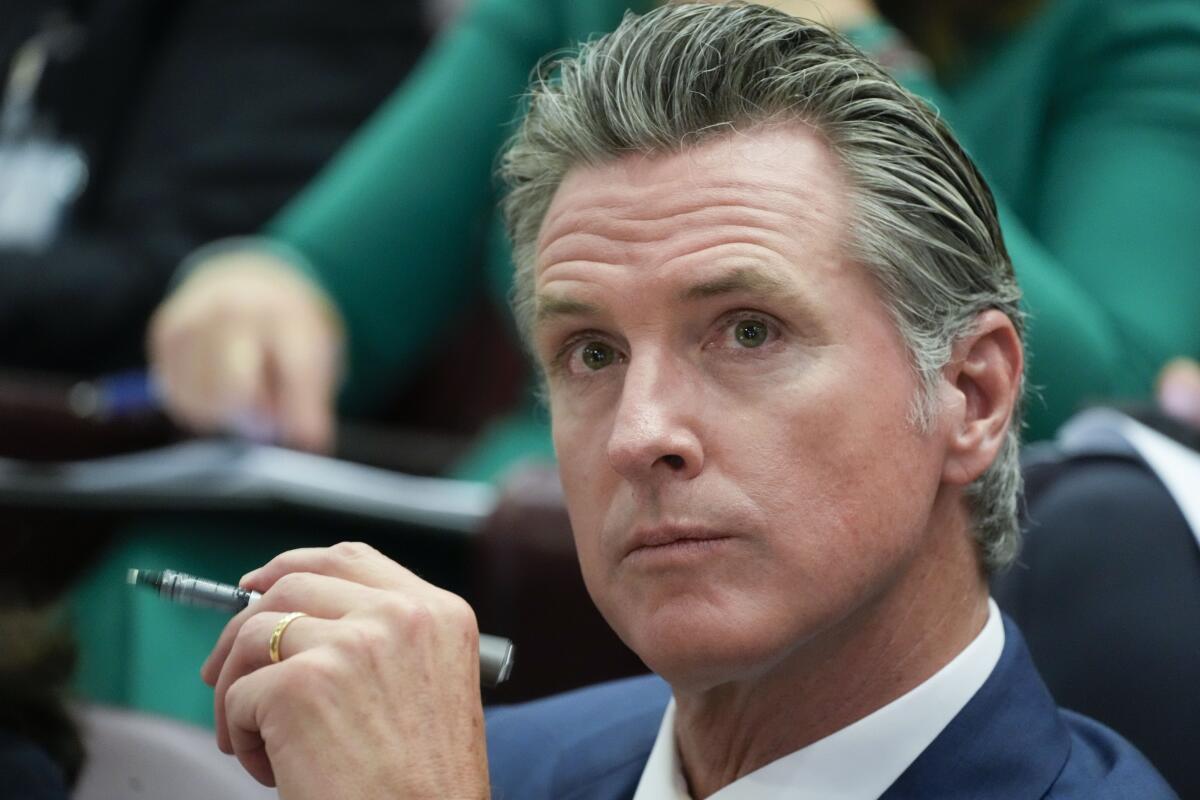
- Share via
After months of outcry, the California Public Utilities Commission voted Thursday to approve a solar energy program that critics are sure will fail spectacularly, making it impossible for many people to access an innovative global warming solution.
The 3-1 vote by Gov. Gavin Newsom’s appointees was the latest stain on the governor’s climate record — and a reminder, as Earth shatters temperature records, that it’s easier to talk about the urgency of the climate crisis than it is to act with urgency.
“As the hots get hotter, the dries get drier, the wets get wetter, simultaneous droughts and rain bombs, we have to address these issues with a ferocity that is required of us,” the governor said last month. “And we’re doing just that in California.”
Yes, we are — except when we aren’t.
Although few politicians have acted more boldly on climate than Newsom, few have aggravated environmentalists more.
You're reading Boiling Point
Sammy Roth gets you up to speed on climate change, energy and the environment. Sign up to get it in your inbox twice a week.
You may occasionally receive promotional content from the Los Angeles Times.
Yes, he engineered a ban on the sale of new gasoline-only vehicles by 2035, led a push to end oil and gas drilling near homes and schools, and prodded lawmakers to investigate alleged oil industry price gouging. But his administration also extended the life of polluting gas-fired power plants in Southern California and slashed rooftop solar incentives, causing installations to crater.
Maybe Newsom has been a victim of his own success, raising expectations to the point where his mistakes shine as brightly as his accomplishments. Maybe the governor and his advisors fume when activists shower them with criticism instead of praise.
But if Newsom is serious when he talks about the urgency of the climate crisis, then he’s asking for this kind of scrutiny.
There’s no “good enough” when it comes to global warming. Scientists say we should be working like mad to cut carbon pollution more than 40% by 2030 — somehow just six years from now — to give ourselves a chance of keeping average global temperature increases to 1.5 degrees Celsius. Right now, California isn’t on track for that kind of cut. And if the Golden State truly wants to be a leader, it should be aiming higher, considering how much harder it will be for low-income countries to slash emissions.
All of which brings us back to Thursday’s vote by the Public Utilities Commission, which dealt with “community solar.”
Community solar projects are a middle ground between rooftop systems (which many people can’t afford) and large solar farms (which can destroy wildlife habitat). They’re medium-sized and built near neighborhoods when possible. Apartment renters, low-income homes and others sign up to buy the energy. Families save money, and fewer planet-warming fossil fuels are burned.
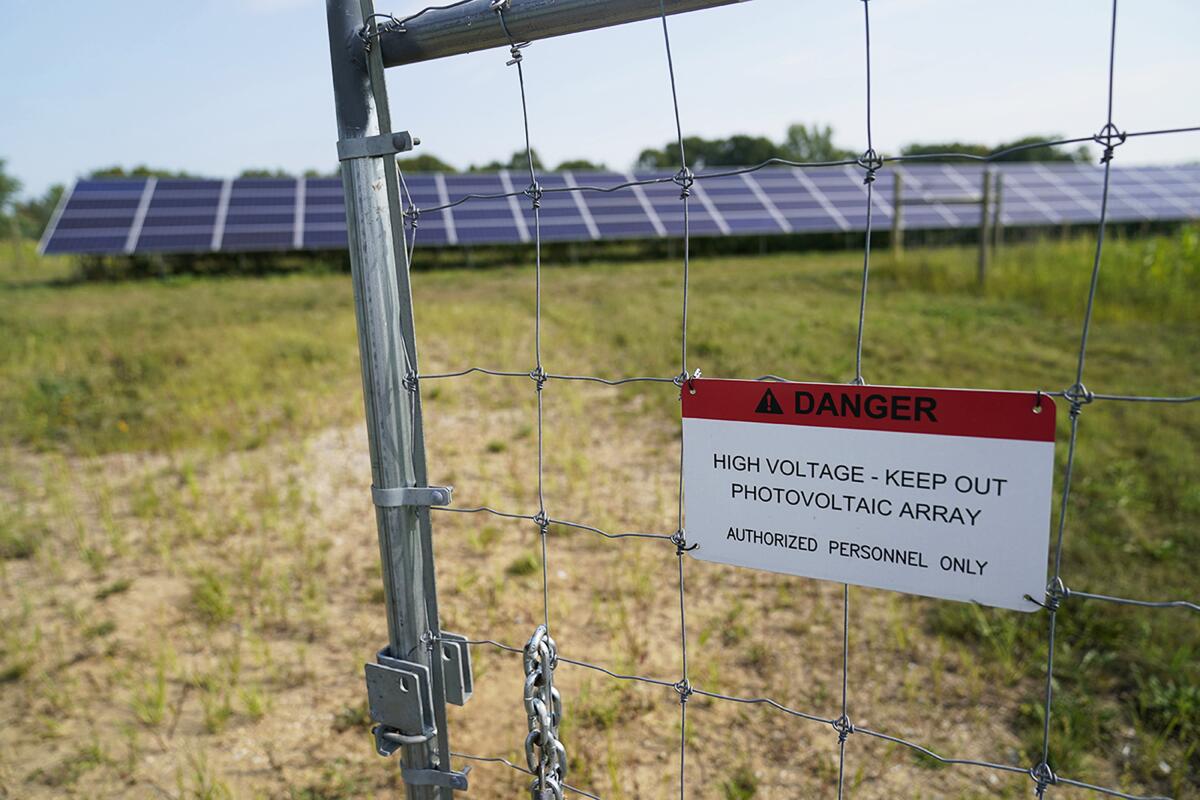
Plus, if community solar projects are built with lithium-ion batteries, they can store solar power for after dark and help California keep the lights on without those gas plants whose shutdown deadlines the Newsom administration has kept extending.
Win, win, win, right? Right?!
Not according to three of Newsom’s appointees at the Public Utilities Commission.
Commission President Alice Reynolds called community solar a potentially useful but expensive tool for reaching the state’s 100% clean energy goal. Although she defended the incentive program approved Thursday, she emphasized that big solar projects, like those being built in the desert or on former agricultural lands, result in lower utility bills due to economies of scale.
The problem with offering too high a subsidy for community solar facilities, she said, is that the incentives are ultimately paid for by all customers of the major investor-owned utilities regulated by her agency — Southern California Edison, Pacific Gas & Electric and San Diego Gas & Electric. This “cost shift,” she said, could add to electricity rates that are far too high for many families.
“There are, frankly, cheaper alternatives to supply clean energy to all customers,” Reynolds said Thursday.
The commission used the same logic when it dramatically reduced rooftop solar incentives for homes, and when it voted last year to make solar less affordable for schools, strip malls, farms and other nonresidential customers of Edison, PG&E and SDG&E.
Critics slammed those decisions, noting that while rooftop solar systems cost more up front than large solar farms, they offer unique benefits. Homes with solar panels are at least partially insulated against rising utility bills. They can stay powered during blackouts if their panels are paired with a battery. And even though scientists have calculated we’ll never meet society’s rapidly growing energy needs with rooftop solar alone, more rooftop panels mean less need to pave over wildlife habitat in the desert.
But Newsom’s appointees to the Public Utilities Commission have largely ignored those arguments.
Their decision Thursday was especially egregious given that community solar developers and advocates worked hard to craft an incentive program that wouldn’t worsen the dreaded cost shift. Their proposal won the support of TURN, an influential consumer watchdog group that had previously fought to slash rooftop solar incentives in an effort to keep electricity rates in check.
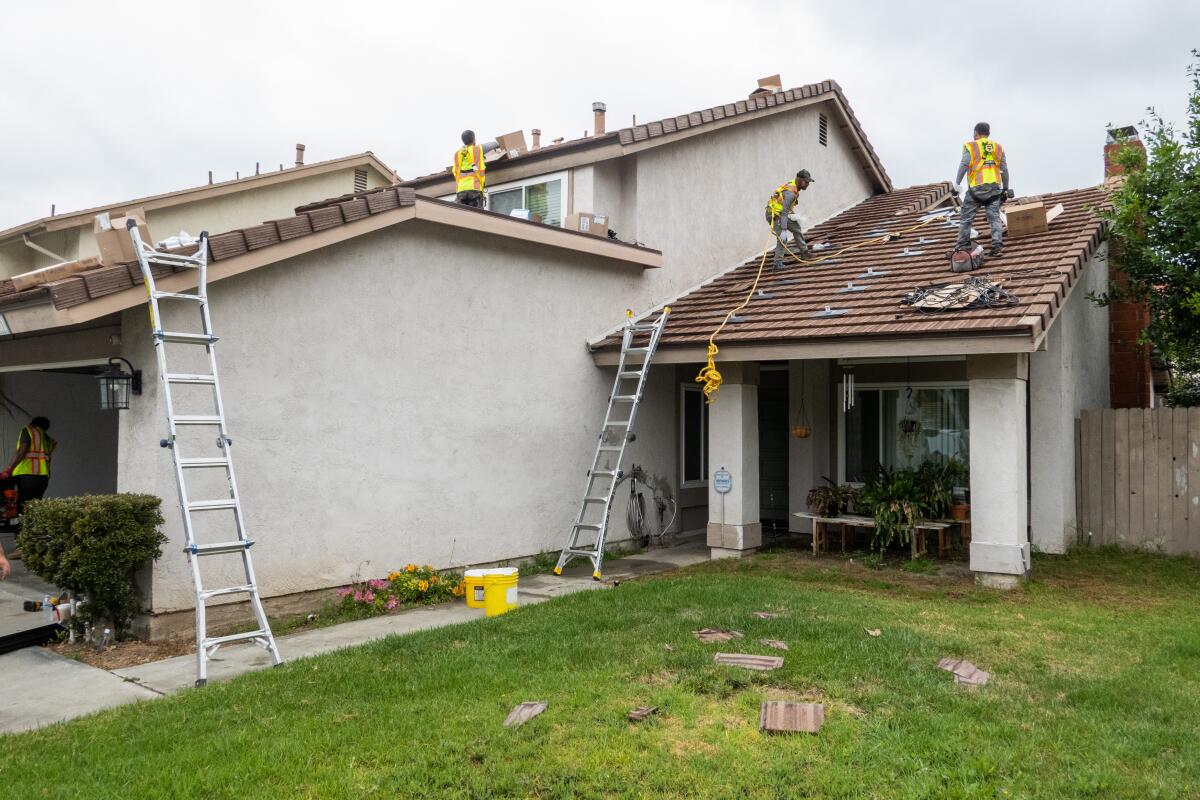
Matt Freedman, an attorney for TURN, said he was “bummed” to see the utilities commission “doubling down” on a bad outcome for community solar, after several weeks during which it looked like Newsom might be hammering out a compromise.
Freedman told me he attended several meetings with staffers from the governor’s office, who were “very locked in” on drafting a community solar plan. Unfortunately, he said, the revised incentive program released by the commission two days before the vote included mostly minor changes — nothing that will help community solar gain much of a foothold in California, even as it plays an increasingly important role in helping other states chase their climate and renewable energy targets.
The biggest change, Freedman said, involved a provision that would have rejected the incentive program pitched by community solar advocates as illegal under federal law — a bizarre claim that could have been used to undermine existing community solar programs in other states. Under pressure from bipartisan critics — including New York Gov. Kathy Hochul and Neil Chatterjee, a top energy official in the Trump administration — Newsom’s utilities commission struck that provision.
Otherwise, though, not much changed.
“There was no compromise,” Freedman said.
Derek Chernow — western regional director for the Coalition for Community Solar Access, a trade association — said in a written statement before the vote that the agency’s decision would “make California’s community solar program dead on arrival.”
“It will not result in the development of new projects,” he said.
It’s possible all is not lost. The state last month secured $250 million in federal funds from President Biden’s Inflation Reduction Act, at least some of which will go toward community solar. The money could help make up for weak state incentives.
Brandon Smithwood, vice president of policy at Dimension Renewable Energy, said in a relatively optimistic written statement that the federal funds could “serve as proof of concept, paving the way for the development of a sustainable long-term market.”
Still, it seems clear to me a valuable opportunity has been missed here.
The legislator who wrote the bill ordering the Public Utilities Commission to promote community solar feels similarly.
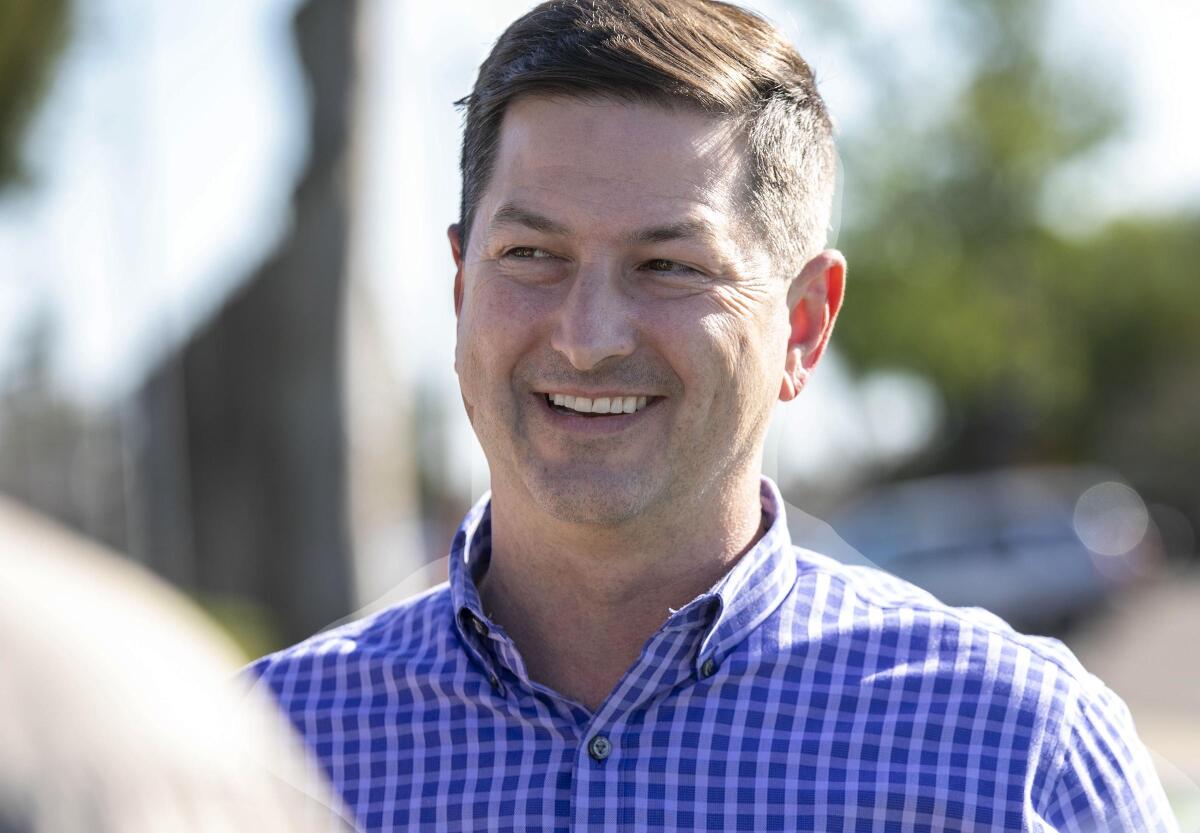
During public comments at Thursday’s meeting, Assemblymember Chris Ward (D-San Diego) called the commission’s community solar plan “fatally flawed” and “wholly inconsistent with my bill.” He predicted it would result in “no new projects being built.”
Stronger incentives, Ward said, could also help home builders comply with a state rule requiring that new houses be powered by solar — a sometimes costly mandate if rooftop panels are the only option, but potentially less expensive with community solar.
“These are the kinds of common sense, cost-saving measures that will help lower housing costs,” Ward said.
Bottom line: California needs to “meet the moment” on climate, to use one of Newsom’s favorite phrases. This shouldn’t be hard.
That said, sometimes it’s a little hard.
In community solar, as with rooftop solar, one challenge has been cost.
Community solar developers, environmental groups and TURN insisted their incentive program would have reduced rather than increased costs for utility customers by limiting the need for Edison, PG&E and SDG&E to make expensive fixes to their poles and wires to accommodate large-scale solar farms. But the Public Utilities Commission’s in-house consumer watchdog disagreed.
The internal watchdog, known as the Public Advocates Office, supported the commission’s decision, arguing that the community solar industry’s plan would have added to the cost shift, raising electricity bills for everyone. Edison took the same stance.
But frustrated as I am with the commission for leaving community solar on the cutting room floor, I nodded sympathetically as Mike Campbell, assistant deputy director of the Public Advocates Office, told me how important it is to keep electricity rates from continuing to rise. California’s clean energy goals depend on a fast transition to electric cars, electric heating and electric cooking, technologies that most people will only buy if they’re comparable in price to gasoline cars and gas heating and cooking.
If electricity gets much pricier, the rest of the world is not likely to follow California’s lead.
“We have a state mandate to get to 100% renewable. We’re going to get there, but doing so in a way that’s as cost-effective as possible is important,” Campbell said. “We don’t want to be heads and shoulders above everywhere else in terms of greenness but be a cautionary tale because our [electricity] rates are 10 times higher than everywhere else.”
He’s absolutely right. But would stronger community solar incentives really make the cost problem worse?
The argument gets super wonky, super fast. I won’t bore you with too many details, except to say that the dispute stems in part from Ward’s legislation. One provision seemingly instructs the utilities commission not to force people who aren’t signed up for community solar to subsidize people who are. Another provision offers more clarity, telling the agency that incentives should be calculated based on the “full set of benefits” of community solar — seemingly opening the door to larger subsidies.
On the one hand, I’m sympathetic to the Public Advocates Office for wanting to read the bill as narrowly as possible. My reporting has led me to believe it’s overreacting, but it’s got a legitimate interest in fighting for lower electricity rates. So does Edison, which — for all its flaws as a profit-hungry monopoly — wants to see electrification thrive. More power sales are good for business.
On the other hand — it’s 2024, and this is California, and Newsom is governor. The planet is roasting. Lake Mead’s water level has been dropping for a quarter-century. Species are going extinct. And we’ve got a clean energy solution staring us in the face.
So why are we debating word choices in a bill whose author says its intent was crystal clear?
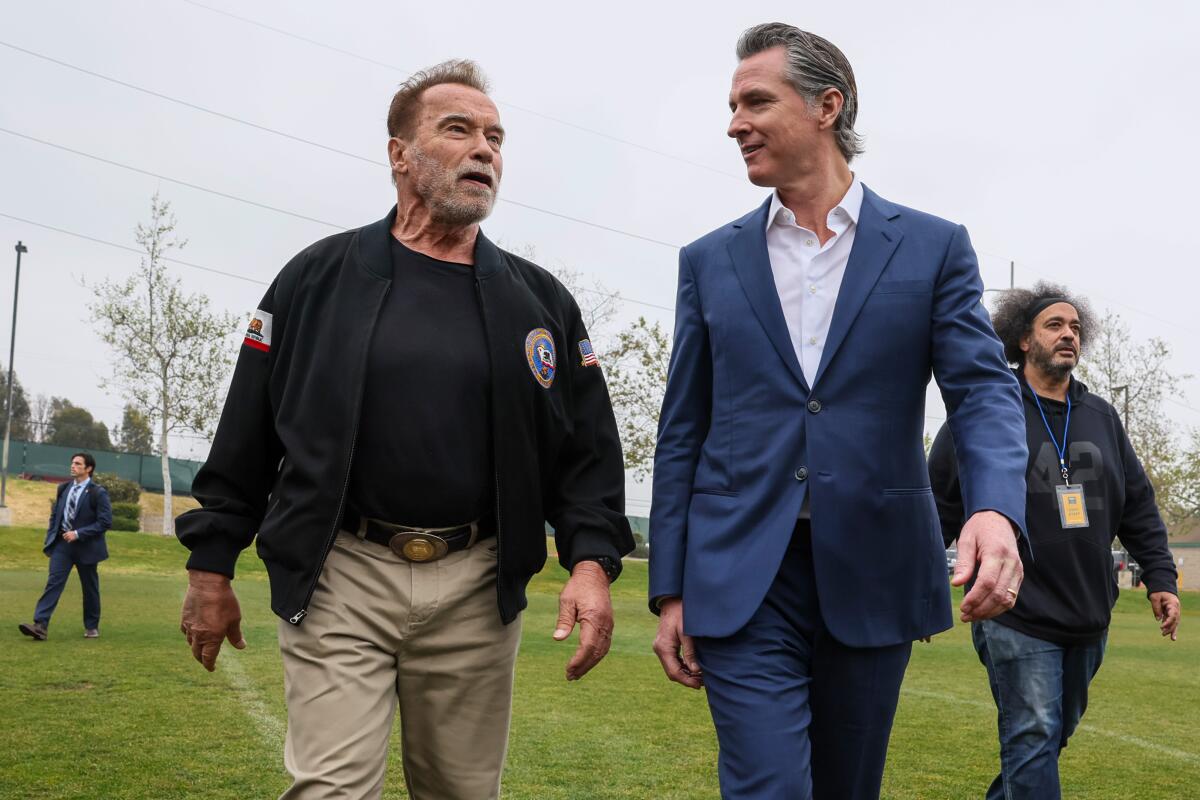
I’m Jewish, but I find myself turning to the New Testament: “For unto whomsoever much is given, of him shall be much required” (Luke 12:48). Yes, saving human civilization from fossil fuels is difficult. But if this were easy, someone else would have done it by now. And California has been given so much. We’re blessed with the world’s fifth-biggest economy. Much is required of us.
I don’t know what’s stopping Newsom from going to bat for community solar. A spokesperson for the governor didn’t respond to my request for comment before Thursday’s vote. Previously, Newsom’s office has declined to weigh in on the debate.
Whatever is going on behind the scenes, I wish Newsom would show real urgency and put climate first all the time, not just some of the time. I wish he’d apply that mentality not just to community solar, but also to rooftop solar, and shutting down gas plants in low-income communities, and blocking freeway expansions, and other climate solutions that he’s given short shrift.
One of Newsom’s utilities commissioners took a principled stand Thursday.
Darcie Houck voted against the agency’s decision, citing California’s climate leadership and the potential for community solar to help low-income families, heavily polluted neighborhoods and Native American tribes lower their power bills. She acknowledged the importance of keeping costs low for all ratepayers but basically said the commission had struck the wrong balance.
“Community solar systems with the right design provide benefits for all ratepayers,” she said.
Community solar won’t solve everything. But neither will any one technology or policy — and that’s OK. If anything, that’s why we need to take each of those climate solutions so seriously. They all have shortcomings. They’re all pieces of the larger puzzle.
As the great scribe David Simon wrote, all the pieces matter.
This column is the latest edition of Boiling Point, an email newsletter about climate change and the environment in California and the American West. You can sign up for Boiling Point here. And for more climate and environment news, follow @Sammy_Roth on X.
Toward a more sustainable California
Get Boiling Point, our newsletter exploring climate change, energy and the environment, and become part of the conversation — and the solution.
You may occasionally receive promotional content from the Los Angeles Times.




